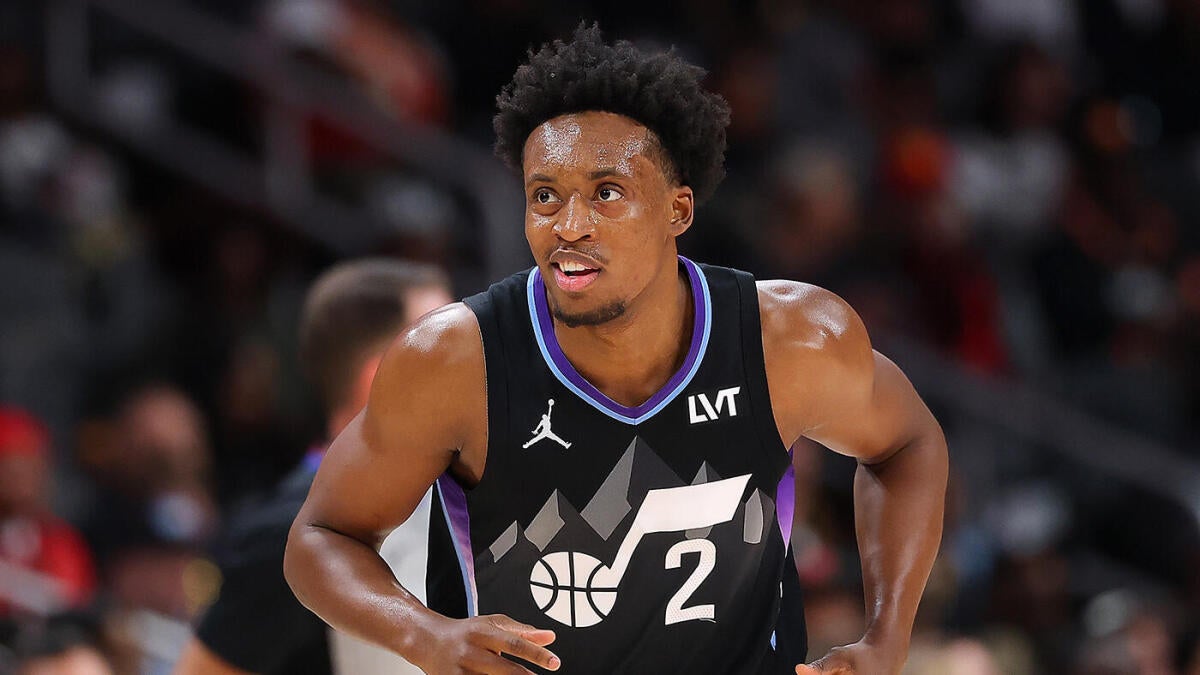The recent trade between the Utah Jazz and Charlotte Hornets, involving Collin Sexton and Jusuf Nurkić, represents a strategic recalibration for both franchises as they navigate the complexities of roster construction and future competitiveness. This exchange, occurring just before the 2025 NBA free agency period, underscores the delicate balance teams must strike between immediate performance and long-term development. The deal not only reshapes the positional dynamics for both teams but also reflects broader trends in asset management, salary cap strategy, and competitive positioning within the league.
Trade Overview and Details
The Utah Jazz traded guard Collin Sexton and a future second-round draft pick (reportedly either the 2030 or 2031 selection) to the Charlotte Hornets in exchange for center Jusuf Nurkić. This transaction effectively shifts the Jazz’s backcourt depth in favor of frontcourt reinforcement, while the Hornets gain a scoring guard known for his offensive capability and toughness. Sexton, a 26-year-old guard with seven NBA seasons under his belt, averaged 18.4 points and 4.2 assists during his most recent campaign with Utah. Despite his scoring prowess, sources suggest Sexton had limited trade value across the league, necessitating the inclusion of a draft pick to facilitate the deal. Charlotte, however, views Sexton as a key addition to bolster their backcourt scoring and overall competitiveness.
Nurkić, also 26, is a veteran center with a $19.38 million expiring contract. He previously played for the Phoenix Suns and appeared in just 25 games last season before joining the Hornets. His presence in Utah strengthens the Jazz’s frontcourt alongside players like Walker Kessler and Kyle Filipowski, providing size, experience, and interior defense. The trade highlights how teams must weigh positional needs, salary cap implications, and future asset management when making roster decisions.
Strategic Implications for the Utah Jazz
The Jazz’s decision to trade Sexton appears driven by multiple strategic considerations. By acquiring Nurkić, Utah enhances its frontcourt depth and size, aligning with the league’s trend toward bigger, more versatile lineups. Nurkić’s expiring contract grants the Jazz salary cap flexibility, a crucial element as they prepare for free agency and potential further roster moves. This flexibility allows the team to explore additional trades or signings that could accelerate their rebuild or retooling process.
Removing Sexton from the roster clears playing time and developmental opportunities for Utah’s younger guards, notably the recently drafted Walter Clayton Jr. This move signals a strategic pivot toward youth and long-term potential in the backcourt, suggesting the Jazz are prioritizing a more balanced and sustainable roster construction. The inclusion of a future second-round pick in the trade underscores Utah’s willingness to part with some assets to facilitate this shift, indicating the team values frontcourt stability slightly more than maintaining Sexton’s scoring at guard.
Impact on the Charlotte Hornets
For the Charlotte Hornets, acquiring Collin Sexton provides an immediate offensive boost and strengthens their guard rotation. Sexton’s experience and scoring ability complement the Hornets’ existing roster, potentially helping the franchise make a stronger push in a competitive Eastern Conference landscape. The trade also reflects Charlotte’s confidence in Nurkić’s replaceability and their ability to redistribute minutes in the frontcourt, given other roster options.
The draft pick that Charlotte receives alongside Sexton offers a future asset that can either be developed or used in later trades, maintaining the team’s maneuverability in asset management. This transaction exemplifies how teams must balance present competitiveness with future flexibility, particularly as they approach free agency and the offseason.
Positional and Salary Considerations
This trade highlights the interplay between salary cap management and positional needs in NBA roster construction. Nurkić’s sizable expiring contract likely made him more tradable from Charlotte’s perspective, enabling them to obtain a guard of Sexton’s caliber while managing salary cap implications. Utah’s frontcourt, already featuring talents like Walker Kessler, now gains Nurkić as a veteran element, enhancing depth, defensive presence, and physicality in the paint—qualities the Jazz may have lacked last season.
Meanwhile, Charlotte solidifies its backcourt discipline and scoring depth, potentially adapting to a style that emphasizes guard-led offense rather than frontcourt dominance. This strategic shift could position the Hornets for greater success in the Eastern Conference, where guard play is often a determining factor in playoff contention.
Broader Implications for Both Teams and the NBA
As this trade occurs just before free agency opens, it sets the tone for both franchises’ offseason trajectories. Utah’s pivot toward interior strength and youth development at guard may lead to more moves focused on long-term growth and cap flexibility. The Jazz’s approach suggests a commitment to building a sustainable roster that can compete in the future, even if it means sacrificing short-term gains.
Charlotte’s willingness to move a veteran center for a proven perimeter scorer suggests an aggressive posture seeking immediate improvement and positioning for playoff contention. This transaction exemplifies the dynamic nature of NBA team construction, where balancing present competitiveness with future assets, salary flexibility, and positional fit drives decision-making. The inclusion of future second-round picks in the trade further highlights the importance placed on maintaining draft capital as a valuable currency.
Conclusion: Recalibrating for Future Success
The Collin Sexton-Jusuf Nurkić trade encapsulates the complex chess game NBA teams play in the offseason. For Utah, acquiring a dependable frontcourt presence on an expiring contract while freeing up guard minutes aims to foster a younger core and strategic salary flexibility. For Charlotte, securing an energetic, scoring guard in Sexton injects offensive punch and experience into their backcourt, aligning with a competitive ambition.
Both teams demonstrate a keen awareness of their roster composition, developmental timelines, and financial frameworks. This trade not only addresses immediate roster needs but also influences each franchise’s identity and direction in the evolving NBA landscape. As the offseason unfolds, the impacts of this swap will reveal themselves in how each team integrates these pieces and competes in the seasons ahead. The decisions made now will shape the trajectory of both franchises, highlighting the delicate balance between present success and future potential in the NBA.

